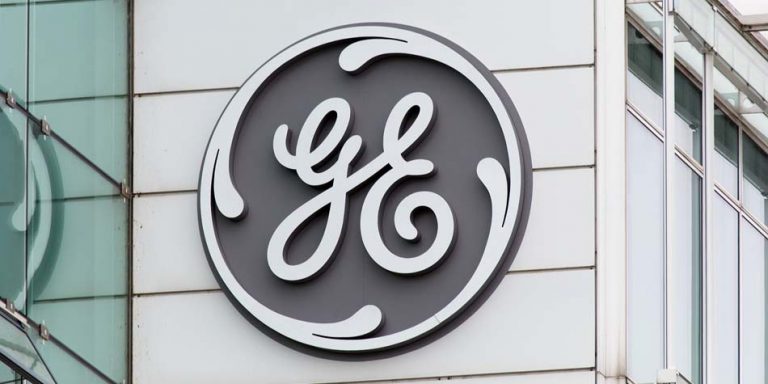Friday’s earnings report from General Electric (NYSE:GE) was a dubious victory for shareholders. The company managed to top earnings and revenue expectations. But, those expectations were tepid — at best — to account for the headwind GE has been wrestling with for a while now. William Blair analyst Nick Heymann’s simple assessment of “They didn’t screw up” subtly depicts how little Wall Street expects from the once-iconic organization right now.
And yet, the initial bullish response that pushed GE stock higher following the release of the earnings announcement had given way early in the day’s trading action. Although shares were down 21% year-to-date as of Thursday’s close, investors shaved another 3% off the stock’s value on Friday, unsure if the worst is in the rearview mirror.
GE Earnings Recap
For the quarter ending in June, GE turned $30.1 billion worth of revenue into an operating profit of 19-cents-per-share.
Both were better than expected. Analysts were collectively calling for a bottom line of 18-cents-per-share and sales of $29.4 billion. And, the top line was up 3% on a year-over-year basis. Per-share profits were lower to the tune of 10%, however, as the company continues to deal with a massive overhaul and streamlining restructuring.
Operating cash flow rolled in at $258 million. While that was down year-over-year, the company was still able to whittle its industrial structural costs down by $1.1 billion through the first half of the year … part of the top-down streamlining effort.
Drilling Down
The challenge in handicapping GE right now is knowing it’s a moving target made up of several pieces, but not knowing how fast any of those pieces are moving from one day to the next.
Its Power (producing) unit continues to be a sore spot all observers know about. Last quarter’s revenue of $7.58 billion for that arm was 19% lower than its tally from the same quarter a year earlier, and Flannery conceded he expects “the power market to remain challenging.”
Meanwhile, the company’s Aviation and Healthcare units continue to do more than their fair share of heavy lifting. Aviation revenue grew 13%, while its healthcare arm saw revenue growth of 6%.
Oil and Gas revenue grew 85% year-over-year, but that’s a misleading figure in and of itself. During the second quarter of last year, GE had not cemented the deal that became the new GE-owned Baker Hughes (NYSE:BHGE). That deal closed in July of 2017, though Flannery also noted the long-term plan was to sell its stake in the recently created Baker Hughes.
The company’s Renewable Energy, Lighting and Transportation units all saw diminished revenue, although the company noted that its renewable energy division would be receiving more attention going forward. Conversely, it expects the sale of its transportation business to Westinghouse Air Brake Technologies (NYSE:WAB), better known as Wabtec, to close sometime in early 2019, effectively ending that division.
“We are progressing on our plans to make GE simpler and stronger,” said Flannery, adding GE is moving forward to implement the strategy and structure we laid out in June. Our focus is on unrelenting execution of this plan to improve operating results, strengthen our balance sheet, accelerate growth across our businesses, and increase shareholder value.”
Looking Ahead
For the full year, GE still expects to report profits of between $1.00 and $1.07-per-share, versus the market’s consensus of 95 cents. GE did trim its 2018 cash flow expectation, however. It was looking for cash flow of between $6 billion and $7 billion, but now feels the actual number will be right around $6 billion. That should leave it with $15 billion in cash at year-end, according to Flannery.
RBC Capital Markets analyst Deane Dray commented lower cash flow projection was “not a new negative. It’s just a continuation of sector-wide weakness,” adding that it even “shows stability.”
Dray also noted, though, that earnings were better than expected largely because of overhead cost-cutting and smaller-than-expected losses from GE Capital … a division that’s anything but easy to get a grip on right now in light of its recent risk-assessment debacle.
Given all the risks (and unknowns) side by side with a limited number of plausible growth prospects, GE may not be a disaster, but there are certainly more certain opportunities. Friday’s moderated selloff can’t be terribly surprising.
As of this writing, James Brumley did not hold a position in any of the aforementioned securities. You can follow him on Twitter, at @jbrumley.
Legendary Investor Louis Navellier’s Trading Breakthrough
Discovered almost by accident, Louis Navellier’s incredible trading breakthrough has delivered 148 double- and triple-digit winners over the past 5 years — including a stunning 487% win in just 10 months.
Learn to use this formula and you can start turning every $10,000 invested into as much as $58,700.
Click here to review Louis’ urgent presentation.

